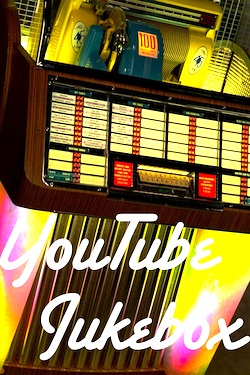By David Ross. In a new feature, Libertas will excavate the YouTube cave of treasures, drawing attention to certain heroes of film, music, art, and literature – and preferring as always the vintage, the homemade, and the un-co-opted. YouTube Jukebox will be an ongoing demonstration of genuine creativity – a recurrent potshot, if you will, aimed at the ventilation shaft of the Hollywood Death Star.
 The D.C.-area chanteuse Eva Cassidy (1963-1996) died young of cancer, so we can enjoy her work only elegiacally and with the kind of autumnal wistfulness with which we listen to Sandy Denny (see here), a similar and even greater singer-songwriter who departed all too soon. I stumbled upon Cassidy’s epochal version of “Autumn Leaves” only because my daughter happened to be learning the song on the piano. I was stunned. Nearly seventy years after the song was written, Cassidy reinvents it and claims it utterly, much as Coltrane claims “My Favorite Things” and Hendrix claims Bob Dylan’s “All Along the Watchtower.” Her talent is not remotely theirs, but her desire to speak through the song is enormous and urgent. She recorded the song at Blues Alley in Washington on Jan. 2, 1996. Did she know she was dying? Perhaps she did, in which case the image of ‘autumn leaves’ is pregnant indeed.
The D.C.-area chanteuse Eva Cassidy (1963-1996) died young of cancer, so we can enjoy her work only elegiacally and with the kind of autumnal wistfulness with which we listen to Sandy Denny (see here), a similar and even greater singer-songwriter who departed all too soon. I stumbled upon Cassidy’s epochal version of “Autumn Leaves” only because my daughter happened to be learning the song on the piano. I was stunned. Nearly seventy years after the song was written, Cassidy reinvents it and claims it utterly, much as Coltrane claims “My Favorite Things” and Hendrix claims Bob Dylan’s “All Along the Watchtower.” Her talent is not remotely theirs, but her desire to speak through the song is enormous and urgent. She recorded the song at Blues Alley in Washington on Jan. 2, 1996. Did she know she was dying? Perhaps she did, in which case the image of ‘autumn leaves’ is pregnant indeed.
Yves Montand debuted “Autumn Leaves” – originally called “Les Feuilles Mortes” (“The Dead Leaves”) – in Marcel Carne’s 1946 film Les Portes de La Nuit. Here Montand reprises his signature tune in the 1951 film Paris Is Always Paris. In 1947, Johnny Mercer rewrote the song in English and it has been a jazz standard ever since.
I hazard to say that nobody has ever taken the song as seriously as Eva or so fully grasped its expressive possibilities. “Autumn Leaves” was supposed to be a smoke-ring of 40s-era café sentimentality; it was never meant to have the emotional weight she gives it. Compare Eva’s life-and-death version to Montand’s unctuous crooning or to Stanley Jordan’s gymnastics on two guitars. She sings closed-eyed with the effort of permanent statement.
Thankfully, the Blues Alley concert is available on CD, though the album does not include, perhaps for copyright reasons, Eva’s fine version of Cyndi Lauper’s “Time After Time,” a gorgeous melody that Eva rescues from its original synth-heavy context.
Posted on June 6th, 2011 at 2:33pm.
Wow. Thanks. Good pick.
The Eva Cassidy video was most interesting. Viewers might like to know something of the song’s composer Joseph Kosma: a Hungarian Jew by birth, he showed considerable musical talent as a small child. He ended up in France during the 30s where he had great success in films, composing among other projects the scores for Renoir’s La Grande Illusion and Carne’s Les Enfants du Paradis. He lost family members to the Nazis, though he himself survived (with several close calls), continuing his career into the 1960s. There is on a Decca CD a very fine recital of many of his songs, including Les Feuilles Mortes, with the French concert/opera singer Francois Le Roux.
Great choice — what a haunting version of the song.
It takes a true artist to see something else in a song, and bring it out the way Eva did here.
She did the same thing with “Time After Time”, which is available on a “Smallville” soundtrack. It played during a scene at the end of the first season, and because of the song, I never forgot that moment in the show.
Her amazing performance of ‘Danny Boy’ gets me each and every time:
http://www.youtube.com/watch?v=852gverKRPo
Looking forward to future installments of YouTube Jukebox. Thanks David.
Terry Teachout, theater and music critic at the Wall Street Journal, regularly features YouTube gems of music (all genres) and theater at his blog About Last Night at http://www.artsjournal.com/aboutlastnight/. There’s a clip featuring Leadbelly up there now.